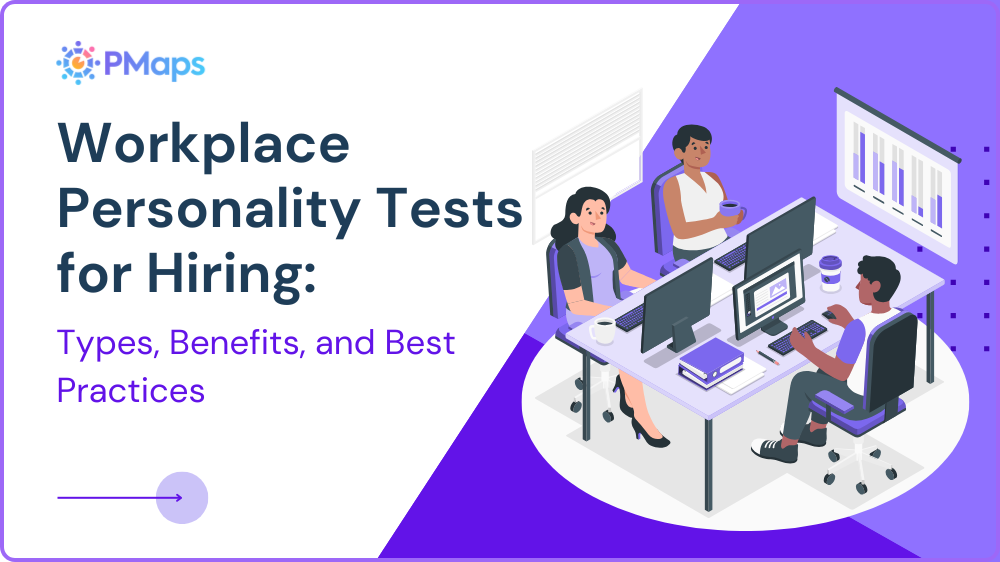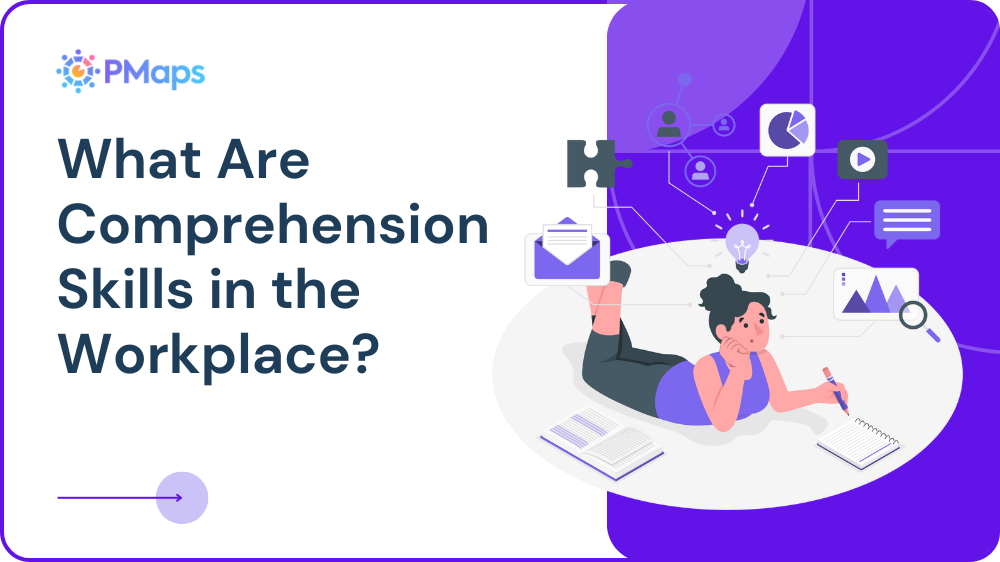
Workplace personalities shape collaboration, leadership, and retention. Personality assessments in the workplace add context you can’t find on résumés. They reveal preferences, stress responses, and communication habits. Used with structured interviews and skills tests, they reduce guesswork and make hiring decisions steadier across teams and locations.
Many employers now include a brief personality screen. Not for verdicts, but for clues that guide questions and onboarding. The right tool supports fairness and speed. The wrong use creates noise. This guide explains what to measure, which tests exist, and how to run them responsibly in hiring.
What Are Workplace Personality Tests?
These tools measure patterns in behavior and attitudes. They focus on how people plan, decide, and relate at work. Results describe tendencies, not destiny. They offer a shared language for managers and candidates during interviews, feedback sessions, and early onboarding.
Skills tests show current ability. Personality profiles show a likely approach. Treat both as complementary. A work sample proves someone can build an API. A profile hints how they handle pressure, feedback, and change. Neither replaces the other. Together, they support better role fit and coaching plans.
Why Employers Use Personality Assessments in the Workplace
Personality assessments in the workplace help teams hire for fit and growth. They reduce false starts by highlighting collaboration style and stress handling. They also improve team balance by avoiding one-note hiring. Leaders gain a faster read on coaching needs, which supports early performance and retention.
These tools also support structured hiring. Shared scales and clear definitions create an apples-to-apples discussion in debriefs. Recruiters move beyond adjectives to observable behaviors. That reduces bias risk and makes decisions easier to defend. The goal is simple: better hires with fewer surprises after day one.
The 4 Work Personality Types Test (Popular Frameworks)
Some teams use a four-type model for quick conversations. Labels vary by framework. A common set is Driver, Expressive, Amiable, and Analytical. It’s simple to teach and easy to recall. It works best for team language, not high-stakes selection.
- Driver: Direct, fast decisions, strong ownership. May rush details under pressure.
- Expressive: Energetic, social, idea-rich. Needs structure to land outcomes.
- Amiable: Supportive, steady, relationship-first. Can avoid hard calls.
- Analytical: Precise, careful, data-led. May over-analyze when timelines squeeze.
Use type language to plan collaboration habits. Pair it with role demands and skills evidence. Keep nuance alive; people flex across contexts. Avoid using types as gates in hiring.
Different Types of Personality Tests for Work
Myers–Briggs Type Indicator (MBTI).
Gives a four-letter type based on preferences. Great for team workshops and self-reflection. Not designed for selection decisions. Use for development, not hiring gates.
Big Five (OCEAN).
Measures five broad traits: openness, conscientiousness, extraversion, agreeableness, and neuroticism. Strong research base. Widely used in workplace studies. Good choice for structured hiring support when linked to job analysis.
DISC.
Focuses on behavior and communication styles: dominance, influence, steadiness, and conscientiousness. Simple and practical for sales and service coaching. Use with care in selection; depth is limited.
CliftonStrengths (StrengthsFinder).
Surfaces top talent themes. Great for development and team language. Not a selection tool by itself. Used to guide onboarding and growth plans.
HBDI (Herrmann Brain Dominance Instrument).
Maps thinking preferences across four quadrants. Helpful for collaboration and creativity work. Not a stand-alone selection tool. Used to design mixed-thinking teams.
Choosing the Best Personality Assessments for the Workplace
Start with role goals. Define success behaviors in plain language. Then select a tool that measures related traits. Check evidence for reliability and fairness. Confirm clear reporting and training for interpreters. Avoid any tool that promises perfect prediction or instant culture fit.
Use personality data alongside work samples and structured interviews. Share the purpose with candidates. Obtain consent and set access rules. Keep results limited to trained staff. Revisit outcomes quarterly to spot drift, bias, or low value. Adjust placement in the funnel based on those findings.
Expert note: Treat personality data as decision support, not a decision engine. It should sharpen questions and coaching plans. It should never replace proof of skill or clear job relevance.
How to Implement Personality Assessments in Hiring
Move from interest to execution with a simple plan: define success behaviors, choose a validated tool, train reviewers, and pair results with skills evidence. This sequence keeps hiring fair and defensible while maintaining candidate trust and manager confidence across teams.
- Define hiring objectives.
List key behaviors and team needs for the role. Tie them to business outcomes. - Select the test.
Choose based on validity, reporting clarity, and job relevance. Pilot before rollout. - Train hiring managers.
Teach interpretation basics and how to write behavior-based interview questions. - Combine with interviews and reference checks.
Use results to guide probes. Keep verdicts anchored in observed skill and evidence. - Review results fairly and transparently.
Share who sees scores, how long they’re stored, and how feedback is given.
Mini case: A services firm added a short profile after a skills screen. Managers tailored onboarding by trait signals. First-quarter attrition fell, and ramp time shortened. The tool did not decide hires; it guided support plans.
Common Misconceptions About Workplace Personality Tests
Misconceptions sink programs fast. Personality tests aren’t crystal balls, don’t freeze people in types, and vary widely in quality. Clear these myths before rollout so managers use results as decision support, pair them with skills evidence, and stay within policy.
“They predict job performance perfectly.”
No test can do that. Personality adds incremental validity alongside skills, experience, and context. Use it to sharpen interviews and onboarding plans. Keep final calls anchored in job analysis, work samples, structured interviews, and reference checks.
“They label employees permanently.”
Profiles describe tendencies, not fate. Behaviors shift with role demands, feedback, incentives, and coaching. Reassess after major changes—new manager, scope, or stressors. Treat results as a starting point for development, not a lifelong tag.
“All tests are equally valid.”
Quality varies. Look for reliability, validity evidence, clear norms, and transparent reporting. Prefer tools with technical manuals, trained interpretation, and role mapping. Avoid products that hide methods or promise instant culture fit.
“If we use them, bias disappears.”
Structure helps, yet bias needs continuous monitoring. Track subgroup outcomes, drop-offs, and complaint patterns. Calibrate prompts and interpretation guides. Provide accommodations, plain-language consent, and periodic audits to keep use fair and defensible.
Conclusion
Personality assessments in the workplace add context you can act on—how candidates plan, communicate, and handle pressure. Paired with skills evidence and clear scoring, they reduce guesswork and help managers set expectations early. Used carelessly, they add noise; used well, they support steadier hiring calls.
If you’re ready to pair brief profiles with role-specific work samples, PMaps can help. Our workflow brings skills tests, structured prompts, and personality signals into one place with clear reporting for panels. Book a quick walkthrough by calling us at 8591320212 or drop a mail on assessment@pmaps.in.









